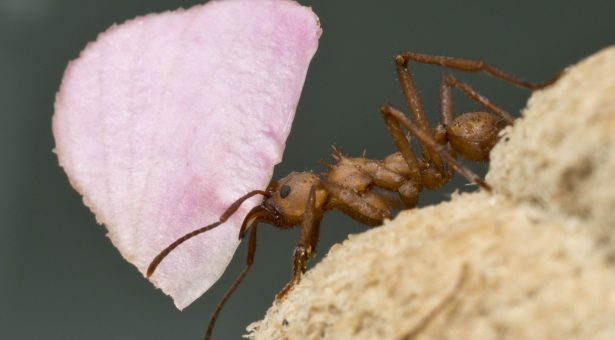Antibiotics from ants revisited; Discovering formicamycins

Back in 2013, then Dr Matt Hutchings was working at the UEA and collaborating with Mervyn Bibb to manipulate the soil bacteria Actinomycetes in the hope of making new antibiotics.
Eight years later, Professor Matt Hutchings has joined us at the John Innes Centre, we caught up with Matt for an update on the project.
“I was perhaps slightly naïve when I started this project and did not appreciate the huge amount of hard work that would be needed to discover novel antibiotics from fungus-growing ants. It’s been great fun though.
Since 2013, Professor Mervyn Bibb has retired, but I have continued this collaboration with Barrie Wilkinson, a natural products chemist who joined the John Innes Centre that year. I joined the John Innes Centre myself in 2020, and Barrie and I now share a lab.
I love it at the John Innes Centre, it is a great place to work and to do scientific research. The facilities are second to none and the support and atmosphere are fantastic. Everybody at the institute has been friendly and super helpful since we moved over from UEA last year.
Our main success from this project has been the discovery of the formicamycins, a new structural class of antibiotics that kill MRSA.
We are excited about these molecules because MRSA does not evolve resistance to the formicamycins so they could be very useful in treating disease.
Our work on formicamycins has led us to discover several new mechanisms by which antibiotic biosynthesis is regulated. We believe this will be useful to researchers around the world trying to discover and develop new antibiotics.
As well as the antibiotics research we do in the lab, we are also studying how some antibiotic-producing bacteria form symbiotic relationships with important crops such as wheat.
These bacteria can access food and a place to live from the plants. In return, the bacteria provide protection to the plants against disease.
If we could add these bacteria to all crop plants, we could use these natural microbes to protect plants and promote their growth, and reduce the use of pesticides and fertilisers which are harmful to the environment.
There is a huge amount of interest in developing and using ‘biologicals’ (natural microbes) to promote plant growth and protect crops against disease. There are some biological products already available, but their use is small scale.
The challenge is to develop products which work consistently in any soil and in all climates. This is difficult because these microbes are living things and often just die when you add them to soil.
I think it will be necessary to specifically breed plants to recruit beneficial microbes and then add those microbes to the plants, e.g. by coating the seeds before planting.
One thing is certain, we need to switch to more environmentally friendly approaches to farming while also increasing food production to feed a growing global population and this is the only way to achieve both those aims”.
